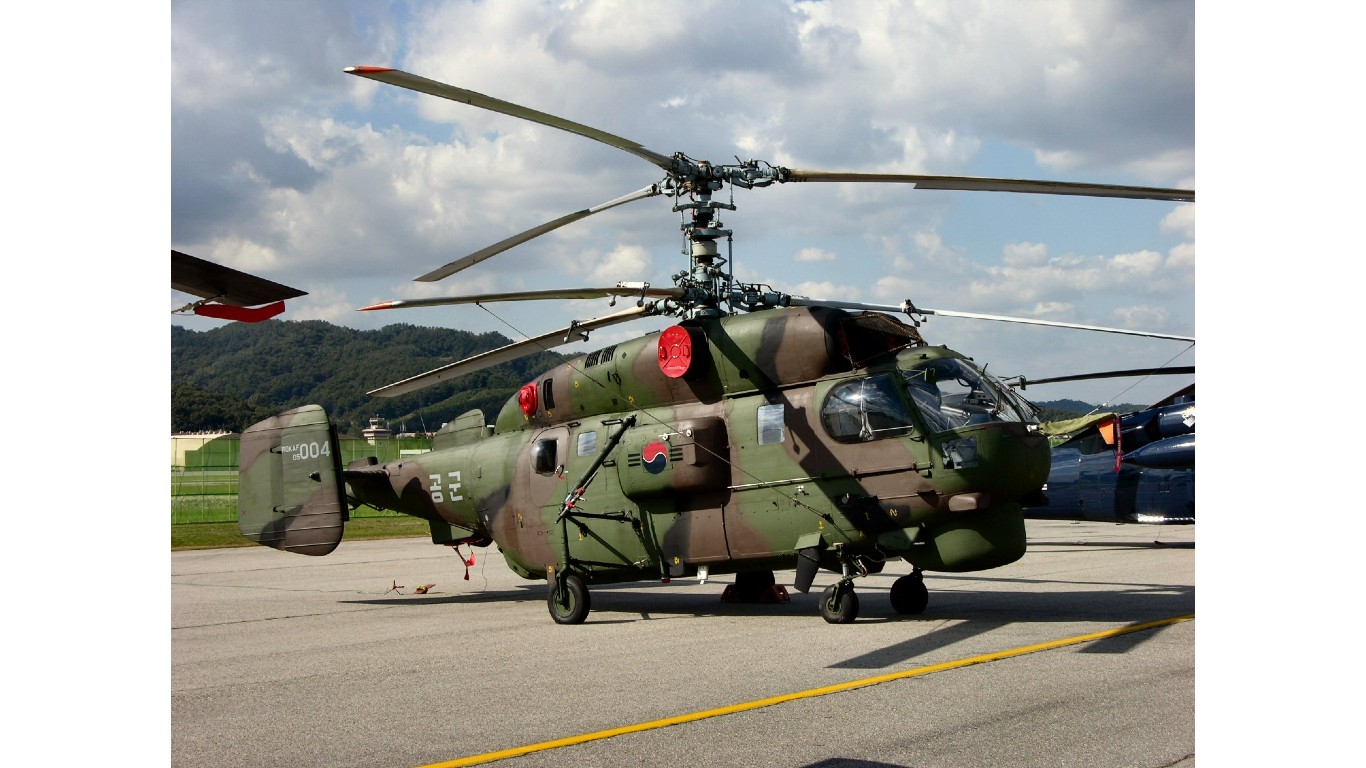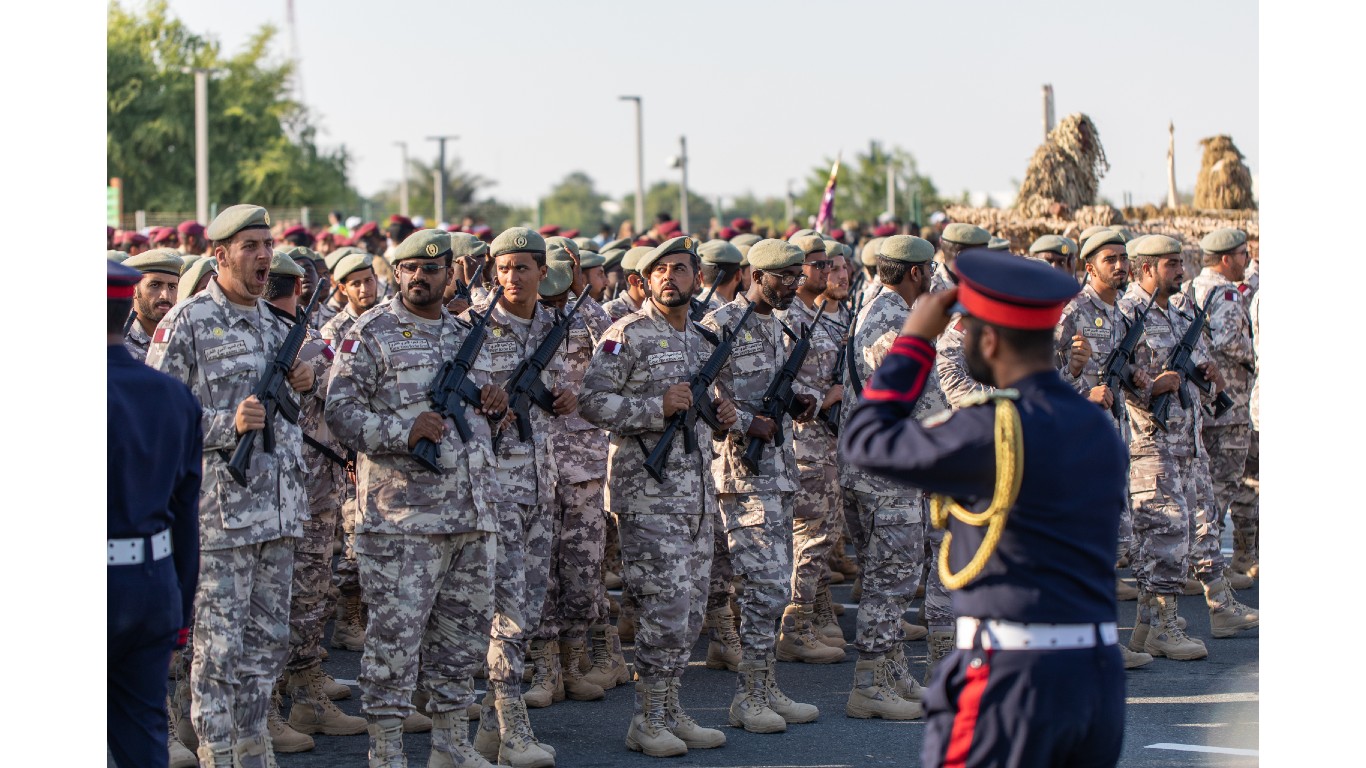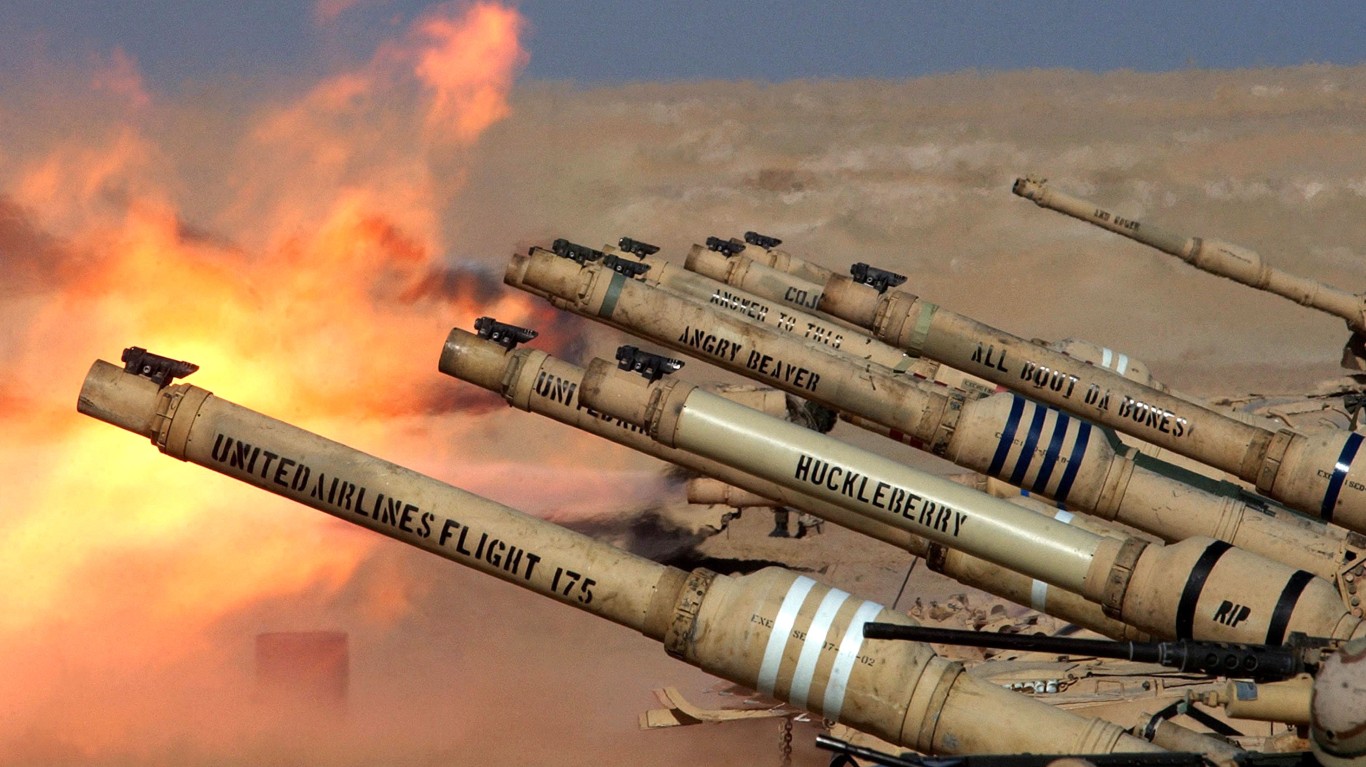
War is big business. And just like any business, making war requires supplies, in this case: weapons and ammo and vehicles. Producing these supplies requires a massive amount of manpower, infrastructure, and raw materials so most countries aren’t able to mass-produce the weapons they need themselves. But even developed nations have reason to purchase large amounts of military equipment, quickly becoming the biggest arms importers in the world. That’s where the arms exporters come in.
The United States is, by far, the largest arms manufacturer in the world, and arguably the largest cheerleader when it comes to armed conflict and arms buildup. Wars use a lot of guns and ammo, and the United States has a lot of it to sell. Times of peace tend to reduce the economic and political influence of the United States, which is why it has instigated conflict and stocked the fires of war for decades. But where are all these guns going? Which country is buying the most guns? Here are the ten biggest arms importers in the world.
Stats for these rankings are taken from the Stockholm International Peace Research Institute (SIPRI) for the period between 2018 and 2022.
#10 United Arab Emirates

The military force of the UAE was only organized in 1971. Since then, it has grown quickly and significantly to be a major power in the Middle East despite the country’s small size and population. Most of its weapons and vehicles are imported from the United States and many of its officers are educated at American military schools.
The UAE has used its considerable military might in only a few regional conflicts. It has helped with ground offensives in Afghanistan and Yemen, and with fighting against ISIL in Syria. All military campaigns have been to support U.S. action in the area.
The UAE has begun investing in its own arms manufacturing in order to reduce its reliance on Western powers for its military supplies. Today, the largest military and defense exhibition in the Middle East happens in Abu Dhabi.
#9 Japan
According to the Global Peace Index, Japan ranks second just behind Singapore among countries in Asia and only spends 1% of its total annual GDP on its military. Even so, it has the tenth-largest military in the world. A lot of this has to do with the fact that Japan is limited by Article 9 of the Japanese Constitution. This is a law that was imposed on the country after its surrender during World War II that took away its ability to declare war or use its military for anything other than self-defense. All of its militaries are called self-defense forces to comply with this law. International political tension in the region, however, has motivated the Japanese government to consider changing this law.
Most of its weapons and vehicle imports come from the United States.
#8 Pakistan

Pakistan has the sixth-largest military in the world in terms of people in full-time service. Most of their weapons imports come from China and the United States. Since the creation of its military in 1947, Pakistan has been involved in four conventional wars with India, and tensions remain high between the two nations over the Kashmir region. This contributes to the continued growth and strength of the Pakistani military.
Pakistan has been very active with its military in the Middle East, primarily supporting Saudi Arabian and United States interests and operations in the region.
#7 South Korea
With a neighbor like North Korea, it is understandable that South Korea would want to prepare itself as much as possible for what seems like an inevitable conflict. It spends 2.6% of its GDP and 15% of its entire government budget on its military and has instituted compulsory military service for all men, resulting in one of the strongest armed forces in the world. Most of these forces are concentrated around the southern border of the Korean Demilitarized Zone (DMZ).
Again, most of the weapons and equipment South Korea imports come from the United States, and they have been extremely active and supportive in all the U.S. military operations around the world. South Korea also spends millions of dollars to have U.S. forces along the DMZ along with their own. Interestingly, all military forces in South Korea, including U.S. forces, are actually part of an operational United Nations command. If war were to break out between the North and the South, the United States would assume command of all South Korean forces for the duration of the war.
#6 Egypt

Most of the weapons and equipment Egypt imports come from Russia. However, the United States spends billions every year on military assistance for Egypt. In 2015 alone, the U.S. sent $1.3 billion in military assistance. The U.S. considers Egypt a major ally in the region, even while they improve relations and purchase significant amounts of military hardware from Russia and China.
With its significant military might, Egypt has been successful in brokering peace and resolving conflicts in the Middle East. It regularly plays the role of mediator between warring states in the region.
#5 Australia
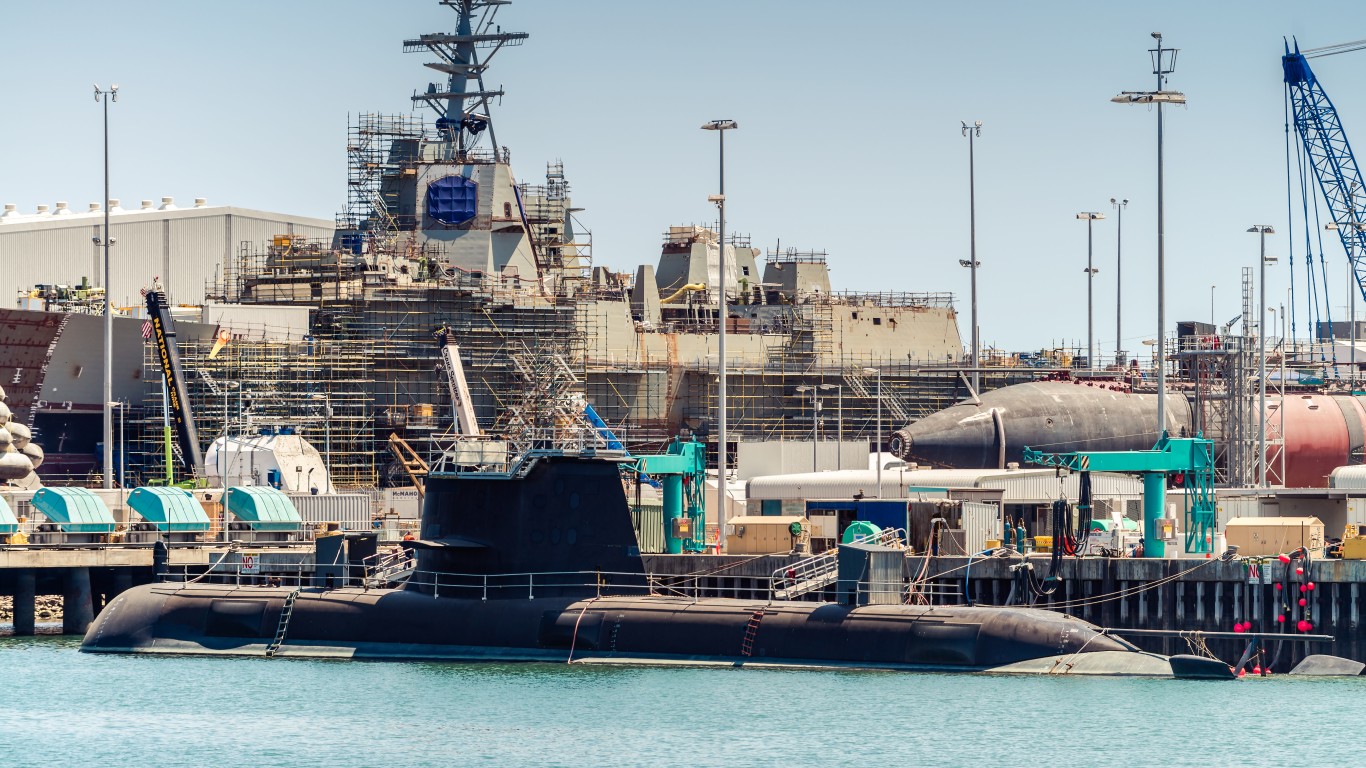
Australia spends 2% of its GDP on its armed forces, resulting in the 12th-largest defense budget in the entire world. How the country spends this money, however, has been the cause of much controversy and scandal within Australia.
Even though Australia has the means and money to produce all its own equipment, it continues to purchase significant amounts of military hardware from the United States, including nuclear submarines and tanks. Much of Australia’s foreign policy is dictated by the policies and objectives of the United States, and since Australia conducts a significant amount of business and investment with the U.S., they are eager to maintain positive relations. This even extends to covering up war crimes conducted by both U.S. and Australian forces in Iraq and Afghanistan to prevent upsetting their political and economic ties.
#4 China
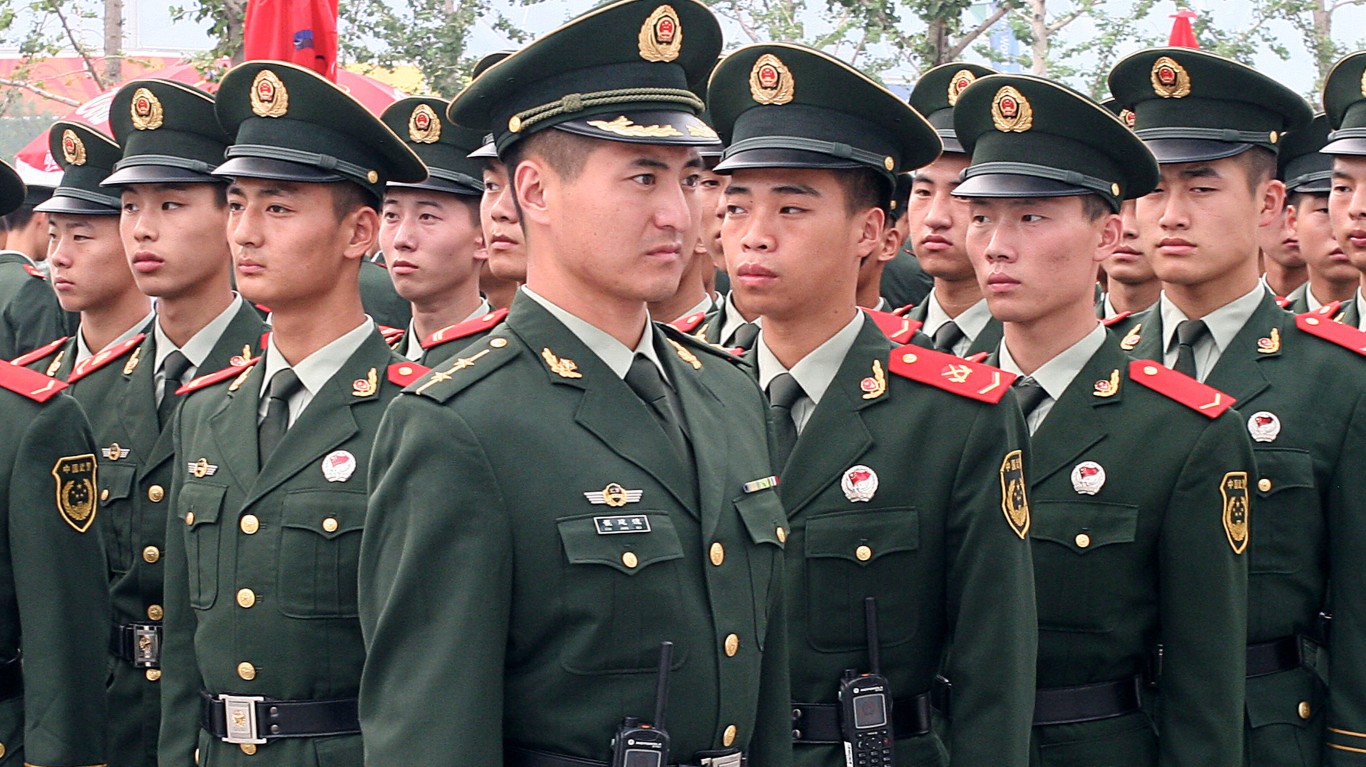
China boasts the largest military force in the world, with over 2.2 million personnel on active duty. It is widely considered to be one of the world’s strongest militaries. China also has the third-largest stockpile of nuclear weapons, the second-largest navy, and the second-largest military budget of $230 billion.
China has been rapidly modernizing its army in order to further influence nations within its sphere of control, and maintain its power against the other two nuclear powers nearby: India and Pakistan. With so many nuclear weapons so close to international conflicts, any military engagement in the region receives significant international attention.
Most of the equipment and hardware China imports comes from Russia. Even though China has become the second-largest exporter of military equipment, it continues to purchase large amounts of weapons for itself. Over 61% of all arms imports come from Russia, with significant amounts coming from France and Ukraine.
#3 Qatar
Compared to the other countries on this list, Qatar’s military is tiny, with just over 11,000 active personnel. That small army, however, is considered to be exceptionally well-trained and equipped by Western military schools and equipment.
Most of its military imports come from the United States and have included combat helicopters, early-warning aircraft, and more.
#2 Saudi Arabia
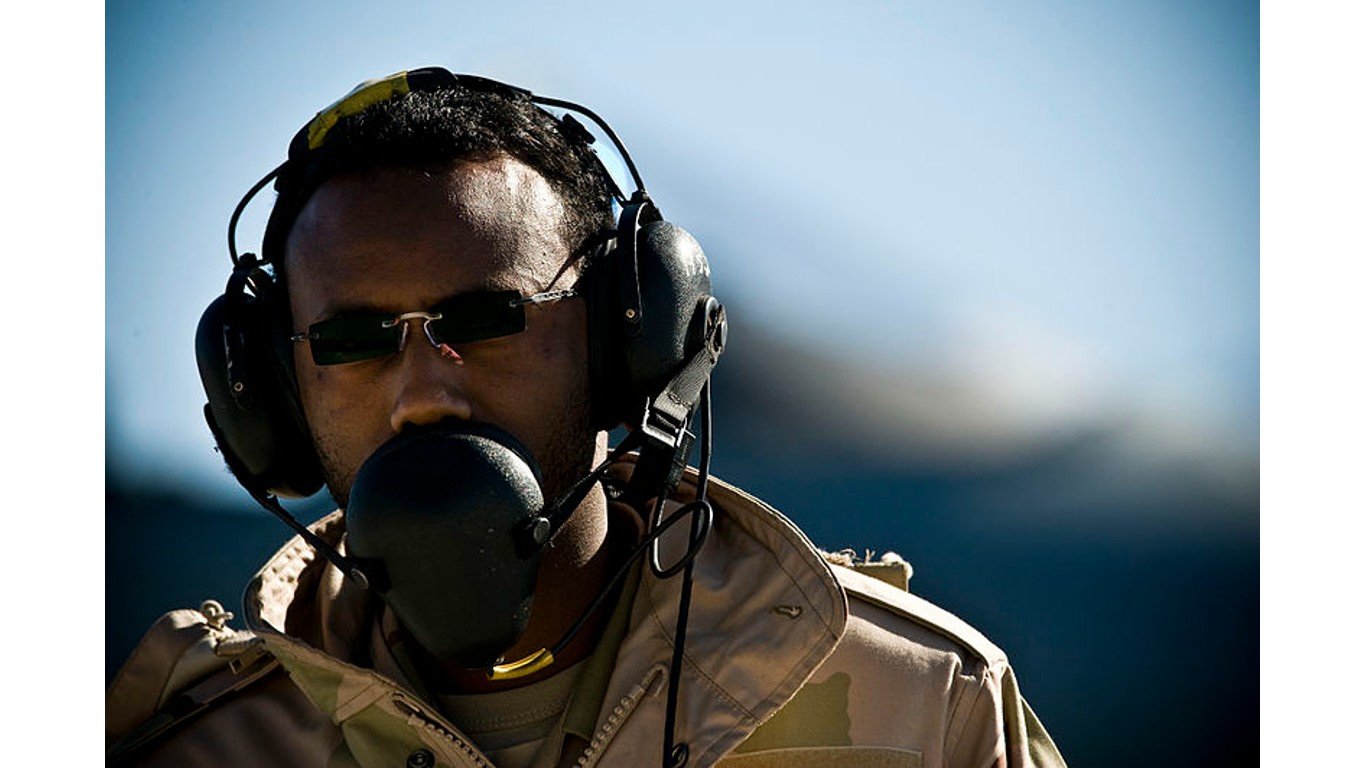
Saudi Arabia has one of the biggest military budgets in the world, spending 8% of its GDP on its military, and making it the third-largest military spender in the world. Most of the equipment it imports comes from the United States. In fact, more than half of all the guns, equipment, and hardware the U.S. sells to Middle East nations goes to Saudi Arabia.
After Israel, Saudi Arabia is the best-equipped military in the Middle East. The United States, and other Western nations, continue to support and supply Israel and Saudi Arabia (among other countries in the area) even while they denounce and threaten each other.
#1 India
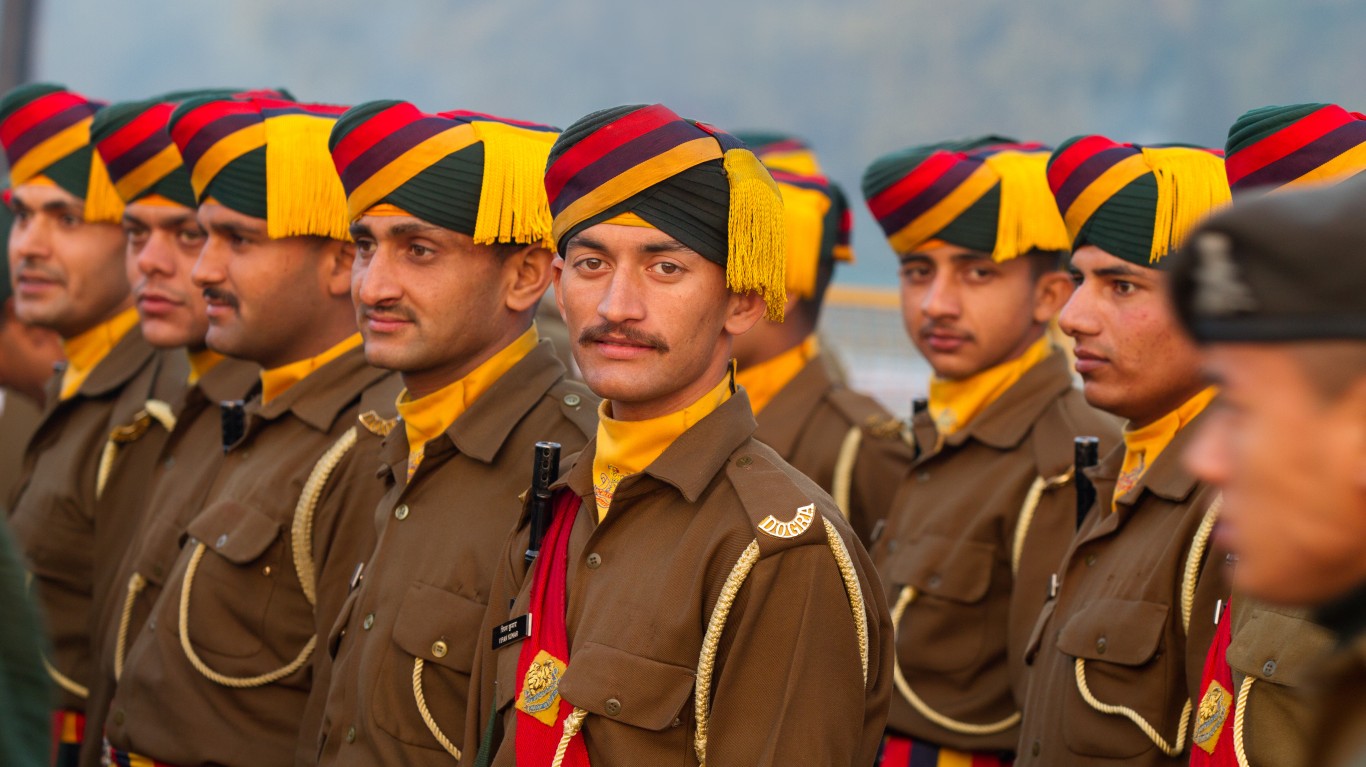
India has the second-largest military behind China, with over 1.45 million active-duty personnel. Most of the weapons and equipment it imports is to prepare for any additional wars with Pakistan and to contend with Chinese aggression in the Indian Ocean where China has been aggressive in claiming territory and intimidating its rivals.
India’s largest arms importer is Russia. It is a significant military power in the region and has strong ties with many Western countries which it seeks to improve in order to combat Chinese power.
One might question the logic of selling weapons, equipment, hardware, and military training to countries that also buy the same supplies from other nations against whom the U.S. is actively preparing to fight in the near future. Additionally, there are numerous examples of nations fighting each other with weapons, bullets, and vehicles built and sold by the United States to soldiers trained on American soil. One might logically conclude that the conflict might not have happened, or at least been mitigated if American weapons were not being exported to frivolously. More so, one might wonder why the United States continues to sell weapons and equipment to nations that use that equipment to oppress its population and commit war crimes and human rights abuses. When there are billions to be made, however, logic tends to take a back seat to greed.
Nowhere is this more apparent than in Israel and Gaza where American bombs and bullets are flying both directions in the conflict between Israel and Hamas. No wonder calls for peace and change from U.S. lawmakers fall on deaf ears around the world.
It’s Your Money, Your Future—Own It (sponsor)
Are you ahead, or behind on retirement? For families with more than $500,000 saved for retirement, finding a financial advisor who puts your interest first can be the difference, and today it’s easier than ever. SmartAsset’s free tool matches you with up to three fiduciary financial advisors who serve your area in minutes. Each advisor has been carefully vetted and must act in your best interests. Start your search now.
If you’ve saved and built a substantial nest egg for you and your family, don’t delay; get started right here and help your retirement dreams become a retirement reality.
Thank you for reading! Have some feedback for us?
Contact the 24/7 Wall St. editorial team.

